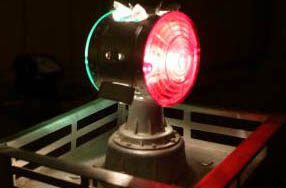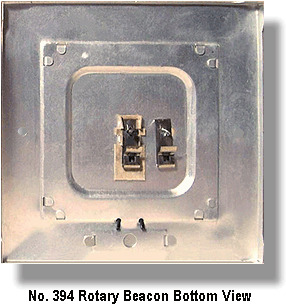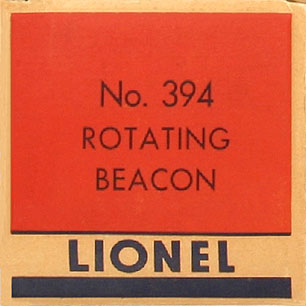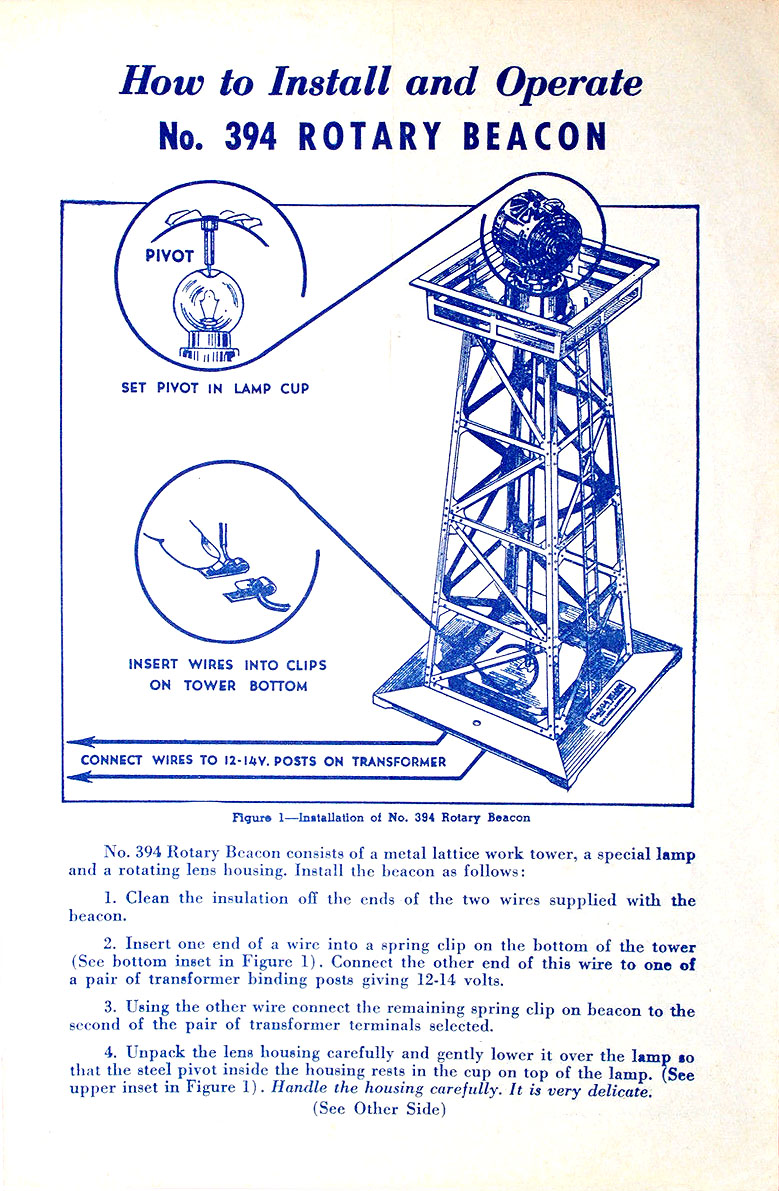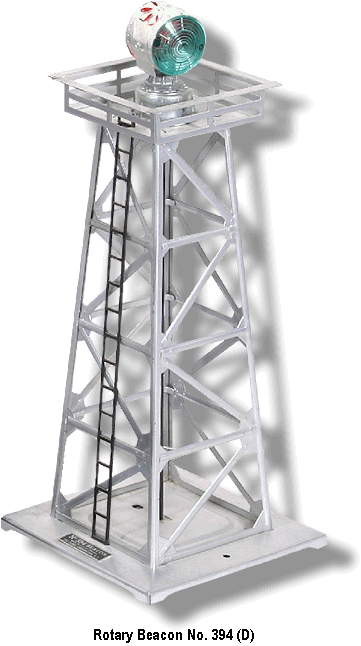
 |
 The Rotary Beacon No. 394 used the heat from the light bulb to rotate the beacon. It used a special dimpled bulb, No. 394-10 to center the pin of the beacon head assembly. This assembly was sold separately under the No. 394-37. This delicate part was noted in the Lionel Service Manual as being subject to the environment, as slight breezes and movements in the surrounding air could effect operation of the beacon. The Rotary Beacon No. 394 used the heat from the light bulb to rotate the beacon. It used a special dimpled bulb, No. 394-10 to center the pin of the beacon head assembly. This assembly was sold separately under the No. 394-37. This delicate part was noted in the Lionel Service Manual as being subject to the environment, as slight breezes and movements in the surrounding air could effect operation of the beacon.

Available from 1949 until 1953, there are two wire clips on the bottom to connect this accessory to a power source. In 1954 this beacon would be replaced by the No. 494 Rotary Beacon.

Since this accessory used heat from the lamp to work, it is advisable that an accessory circuit that is always on, should be used to run this beacon. This is to keep the lamp hot so that the beacon will continue to rotate.

There are six variations of this Rotary Beacon:

Variation A: Has a RED painted stamped steel tower with a SERIF lettering on the identification plate at the base. 1949 production.

Variation B: Identical to Variation A except has SANS-SERIF lettering on the identification plate.

Variation C: Has a DARK GREEN painted stamped steel tower similar in color to what was used for the No. 455 Oil Derrick. 1949-50 production.

Variation D: Is an unpainted Aluminum tower, base, and platform that is often identified as the SILVER painted steel tower used only on the No. 395 Floodlight Tower. 1950-53 production.

Variation E: Identical to Variation B except that it has an aluminized sticker instead of an aluminum identification plate. Early 1949 production.

Variation F: Identical to Variation D but has an unpainted aluminum tower and platform, and a RED painted base.
|


